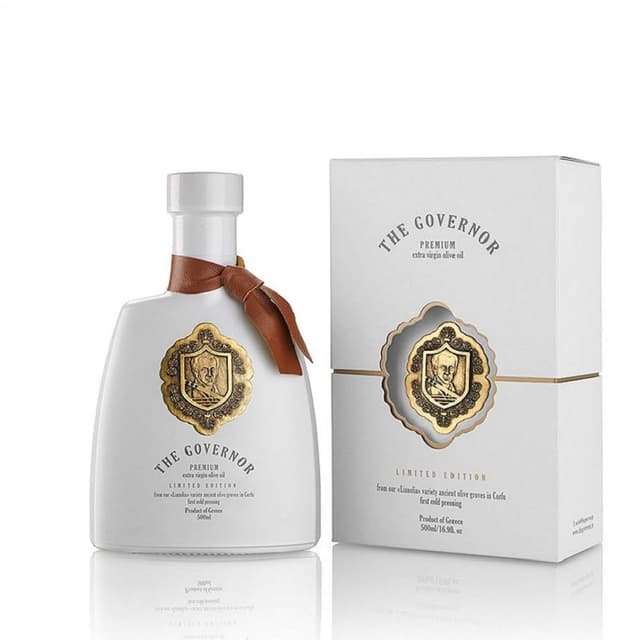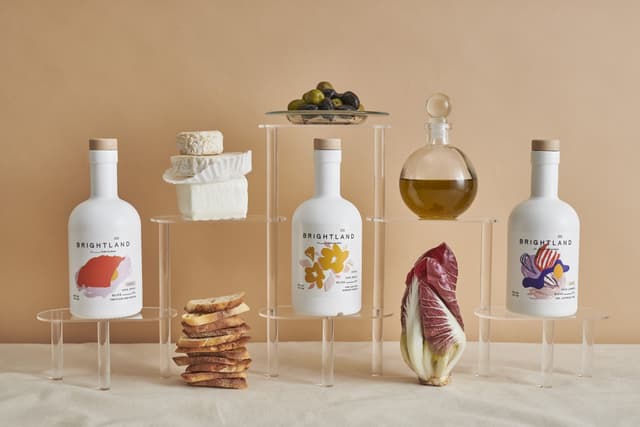Eurof Uppington | January 14, 2022
The Olive Oil Buying Edition
On transparency, packaging, and provenance
Recommended Products

Dan Flynn, ex head of the UC Davis Olive Center, used to swear by The Governor from Corfu, which in the past has boasted incredible polyphenol values of 900mg/kg.

A US brand disclosing polyphenols in the high 700s, part of the high-end culture of olive oil with sommeliers, qualified tasters, prizes, and rituals.

A lower priced oil from traditional groves, whose owners definitely know what they’re doing. Part of the high-end culture of olive oil.
Eurof Uppington (EU) used to run hedge fund money until he came to his senses. Now he worries about how we eat, and sells olive oil from family farmers in Greece to restaurants in Switzerland and France. He has a startup, Amfora Sarl, based in Geneva (www.amforahome.ch).
Eurof here. Three questions I worry about when buying food are 1) “is this healthy and tasty?” 2) “is it good quality?” and 3) “am I harming the planet”? Buying olive oil can worry people all three ways. I work in olive oil and claim some limited expertise. My goal here is to help you to make an informed buying decision, whatever is on sale where you are.
Why is this interesting?
The olive oil industry is opaque, with many steps between farmer and consumer, regulatory capture, and outright corruption. I live in Switzerland, and here a 2019 study found the majority of “extra virgin” olive oils on sale were mislabeled and effectively rancid. Only 21% were properly extra virgin. The rest were mostly “virgin”, a lower grade with taste defects, and worse, 23% were lampante, not even food grade. 4% weren’t olive oil at all. Price was no guide: mislabeling was roughly the same at all price points. The US is a producer country, so might be better, but there hasn’t been a comprehensive study since UC Davis in 2010 found that 69% of imported oils failed the “extra virgin” taste test (Californian ones weren’t tested, an interesting omission).
So, question number one, how do we know if an olive oil is the real thing? Well, good news: bad olive oil won’t hurt you. You’re just missing out on what it could be. But to get there we need a fresh, properly extra virgin olive oil, and lots of it.
To make sure, we need as much information as possible. Now; does your bottle say “First cold press” on it? That’s not information, rather marketing flim flam, like saying “wheels included” on a car. All virgin oils are “cold press” by definition. Instead you want space-time coordinates: a harvest (not bottling) date in the last 12 months, ideally from a single producer. Failing that, a region and the olive variety are your best bet. Look for free fatty acid content, a measure of the quality of the fruit at pressing. Extra virgin grade should be 0.8% or less, though California is more stringent and defines the threshold at 0.5%. If you find 0.3% or less, buy it. Showing polyphenol content is even better, but rare. Don’t worry too much about what the numbers are. Simple disclosure shows someone cares.
Freshness is critical, so proper packaging is too. Avoid plain glass: light is the enemy and will oxidize your oil. Brown or green glass is better, but still lets in light. I like metal, preferably tinplate. Try and buy in as large size as possible to reduce the ratio of surface area to volume—the less the oil comes into contact with anything else, the better. 3L and 5L cans are a good way to go.
Assessing environmental impact is harder. Supermarket oils are generally blends, sourced from giant intensive farms, using pesticides and fertilizers. Traditionally produced oils are much better. Annoyingly most new world oils, Californian, Australian, and South American, tend to be intensively produced. Spanish and Portuguese can be, too. Greek and Italian are safer as these oils still come mostly from smaller artisanal farms. I wrote about this in a recent WITI. If it’s not clear from the bottle, reckon there’s at least some intensive product in there.
As for finding the “best” olive oil, there is a high end culture, with sommeliers, qualified tasters, prizes and rituals, though it’s less well developed than in wine. Really top brands compete on polyphenol content. Dan Flynn, ex head of the UC Davis Olive Center, used to swear by The Governor from Corfu, which in the past has boasted incredible polyphenol values of 900mg/kg. I recently discovered 2 US brands, Brightland, disclosing polyphenols in the high 700s, and Fat Gold, a lower priced oil from traditional groves, whose owners definitely know what they’re doing. (Editor’s note: both are friends of WITI and worth supporting.) Be warned though, high polyphenols can mean early harvest and therefore extra bitterness. Fruit and grassy tastes are what most people like, though if you get into olive oil, over time you’ll appreciate bitterness too.
To sum up, if you know where your oil comes from, you’re already ahead of the game. If you only have a supermarket to shop from with an unsatisfactory selection, go online. In the US default to Californian unless you find an old world oil that ticks the boxes. Buy in bulk because it’s cheaper, keeps better, and you’ll have enough to use it for everything. Finally, taste!, sample, compare. Get some friends over and have an olive oil party. (EU)
Quick Links:
Quick Links:
I always viewed not-olive cooking oils (like sunflower, canola, soy etc) as nasty stuff, not at all as good for you as fresh olive oil. Now the latest evidence says. . . they’re actually toxic. Huge implications for global diets, not just in the US. But also hope if this turns out to be the key to chronic disease. This is the longer (45 min), more scientific and infinitely more terrifying version. (EU)
Growing up in the UK in the late 70s and 80s we were all encouraged to eat now apparently deadly hydrogenated trans fats in margarine brands such as Flora (amazingly still on sale). I love TV commercials from the period, the heyday of the UK ad industry just for the effortless style. But now the equivalent of the old cigarette commercials, there’s this. (EU)
In our house, the go-to metaphor referring to once desirable but now-in-retrospect dangerous products is “radioactive underwear”, an actual thing in the heyday of the early C20th Radium craze Luckily, now we can buy the opposite. (EU)
WITI x McKinsey:
An ongoing partnership where we highlight interesting McKinsey research, writing, and data.
Quantum computing advances. One example, a research center in Japan made a breakthrough in entangling qubits (a basic unit of information in quantum) that could make large-scale quantum computers possible. Investment’s pouring in, start-ups are proliferating—but what does it mean for your organization? A new report, gives you intel on how to start strategizing.
Thanks for reading,
Noah (NRB) & Colin (CJN) & Eurof (EU)
—
Why is this interesting? is a daily email from Noah Brier & Colin Nagy (and friends!) about interesting things. If you’ve enjoyed this edition, please consider forwarding it to a friend. If you’re reading it for the first time, consider subscribing (it’s free!).

